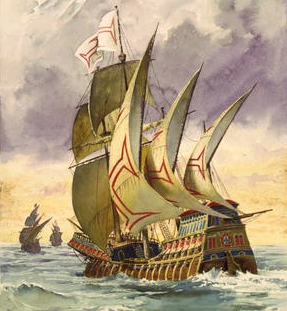The Portuguese in the United States

Hispanic Division, Library of Congress
The Portuguese were the leading European explorers in the fifteenth century and
it was through the efforts of Portuguese-born and sponsored men that many parts
of the world, including the coast of present-day California, were discovered
and mapped. They began settling in the United States several centuries later,
although there were isolated Portuguese Jewish communities here beginning in
the seventeenth century and in the Sandwich Islands, now Hawaii, in the eighteenth.
In the late 1800s large numbers began to immigrate, often first working on whaling
ships leaving from the Azores or Cape Verde Islands and settling in Hawaii, California,
or New England. Eventually they would come to New Jersey and other parts of the
United States. With the enactment of new immigration legislation in 1921, new
arrivals dropped tremendously, picking up again in the 1950s after earthquakes
devastated the Azorean island of Faial. The immigrants came largely from the
Azores, but also from Cape Verde and Madeira, later from mainland Portugal and
occasionally from other parts of the Portuguese empire, including Macau. They
and their descendants have been active in all facets of life in the United States,
from agriculture to industry to politics, and at the same time have introduced
some of their customs, food, and even instruments to other Americans.
This project is sponsored by the Luso-American Development Foundation, and is part of the Transatlantic Digital Library project.
Special Presentation:
Celebrating Portuguese Communities in the U.S.: A Cartographic
Perspective
Acknowledgements
 Library of Congress
Library of Congress
Comments: Ask a Librarian
(06/04/99)

 Library of Congress
Library of Congress